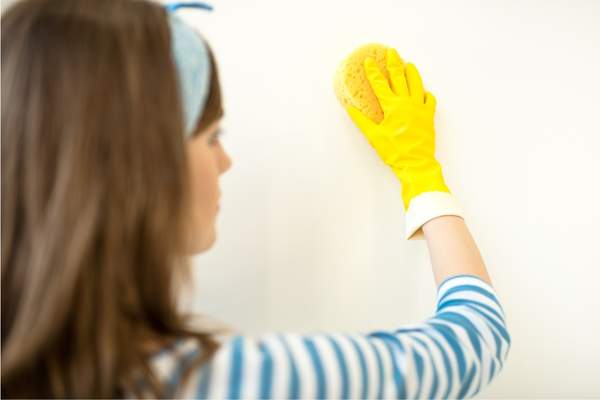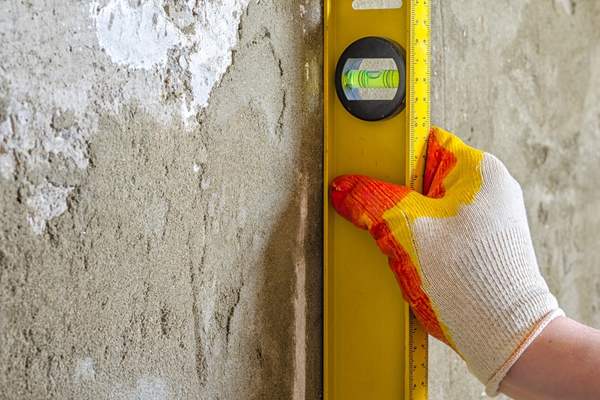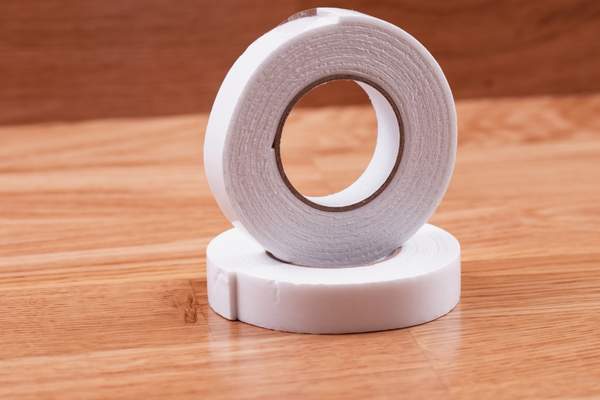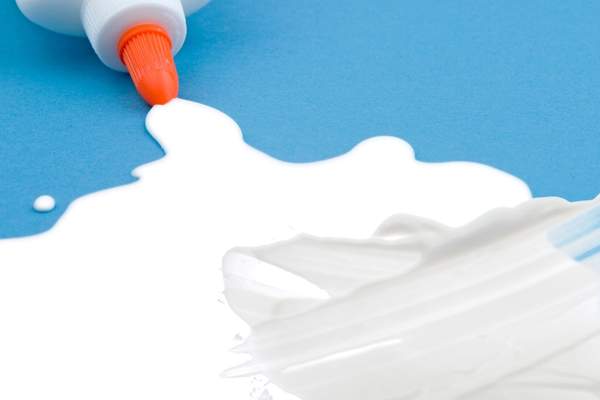Among the various tiling options, peel-and-stick tiles are one of the more popular choices as they are super easy to install.
Using peel-and-stick tiles makes the process less messy since you will not use any tile adhesive. This excellent tiling option will provide a modern look to the house.
This article will give some interesting facts about peel-and-stick tiles.
Although the adhesive present in the peel-and-stick tile will be sufficient for strongly bonding the tiles to the substrate, in some cases, you may witness these tiles not sticking properly.
In such a situation, you can add adhesive to adhere the tiles to the surface. Depending on the glue you add, the curing time will differ.
Reading further, you will find different tips for adhering to peel-and-stick tiles firmly.
Peel and Stick Tiles

If you are still deciding whether to DIY the traditional tiling method, peel-and-stick tiles will make the process easier. Following are a few things that you must know about peel-and-stick tiles.
- This tiling option is less expensive, fast, and easy. You can install the peel-and-stick tiles using a utility knife, level, and ruler. Hence, the process is less messy and extremely quick.
- There are a variety of peel-and-stick tiles available on the market. So, you can decorate your kitchen or bathroom backsplash with a unique design.
- According to the material of the peel-and-stick tiles, the prices will change. Vinyl or gel tiles are less costly, while stone, metal, or glass tiles are 3–5 times more expensive.
- Since you don’t need special tools or skills, even newbies can try DIYing the tiling project using peel-and-stick tiles.
- These self-adhesive tiles are easy to install.
- Removing the old tile is unnecessary since you can lay the peel-and-stick tiles over the existing tiles.
A Few Tips for Better Adhesion of Peel and Stick Tiles
The peel-and-stick tiles are self-adhesive, so you can stick the tiles to the substrate by removing the backing.
If the grip is not firm enough, then the following are a few hacks you can use to improve the adhesion:
Controlling the Temperature
The ideal temperature of the room must be above 65 degrees Fahrenheit.
You must maintain this temperature for 48 hours before the installation to help set the peel-and-stick tiles firmly.
Cleaning the Wall or Floor

Dust will reduce the adhesion of the peel-and-stick tiles.
Therefore, you must clean the surface well before installing the tiles. A debris-free surface will enhance the adhesion.
Mapping Out the Tiles

Before removing the backing, map out the tiles, as this will help to align the tiles perfectly.
Draw chalk lines and start tiling from the center of the wall. This allows you to adhere to the tiles evenly.
Further, using tiles from the same batch will prevent visual inconsistency as the sizes will be similar.
Leveling the Subfloor

Installing these tiles on an unleveled subfloor will reduce the bonding strength. Hence, make sure to level the surface before installation.
Using Bond Enhancer
To ensure firm bonding, you can use self-stick primer tile.
This chemical compound is a bond enhancer that will help the adhesive on the back of peel-and-stick tiles bond firmly to the surface.
Cut the Edge Tiles
Measure the size of the edge tile that you will need to cover. Cut the tile and stick it to the edge.
This will prevent air bubbles from forming under the adhesive.
Rolling After Installation
After installing the peel-and-stick tile on the floor, roll it back and forth with a roller.
This will help stick the tile to the subfloor.
Using Adhesive for Bonding Peel and Stick Tiles
When installing stick-on tile, you may encounter issues like weak adhesion. This may occur if water penetrates the surface or if you work on an uneven surface.
If the grip needs to be firm enough, the whole project will become a flop, as you will witness loose tiles and a lack of visual consistency.
If you are encountering such a problem, the following are a few solutions to help fix the issue.
Using Double Tape

The double tape helps bond the surfaces together. Therefore, you can use this tape to enhance the grip of peel-and-stick tiles.
Paste the tape on the surface where you will be installing the tile. Then remove the backing and carefully stick the tile on top of it.
You can repeat the process for each tile to improve the adhesion.
Note: If you notice only a few places where the tiles are loose, you can cut a piece of the tape and stick it in the areas where necessary. This will minimize the work, as you only use the tape on some tiles.
Using Extra Adhesive

Using extra adhesive is another solution to treat trouble spots.
If you witness loose tile with weak adhesion, you can fix it using Loctite All Purpose Adhesive. Apply a thin adhesive layer in the necessary places and then stick the tiles.
Rub out any air bubbles for firm bonding. This way, you can fix any loose tiles. When choosing the adhesive, ensure it is designed for clean and dry floors.
The curing time of the glue will differ according to the glue you are using.
Note: You must apply the adhesive to the floor, not the back of the tiles.
Bottom Line
Peel-and-stick tiles are excellent for enhancing the look of your house. If you plan to renovate the backsplashes at a minimum cost, installing peel-and-stick tiles will be an excellent idea.
Due to specific issues, you may sometimes witness loose tiles after the installation. If you notice trouble spots, use double tape or a relevant adhesive to stick the tiles to the subfloor.
Adding extra glue may increase the curing time, but this will prevent loose tiling. The adhesive improves the grip, making the project last longer.
We hope you found some interesting hacks to make the backsplash tile more durable!
FAQs
Can You Use Gorilla Glue to Bond Peel-and-Stick Tiles?
Yes, you can use Gorilla Glue or any other super glue to bond peel-and-stick tile. Use it only if the self-adhesion needs to be stronger.
Most peel-and-stick tiles have durable self-adhesion, so you don’t need additional adhesives.
How Can I Improve the Stickiness of a Peel-and-Stick Tile?
You can use the peel-and-stick tile primer.
Applying this product to the subfloor will improve its adhesion.
How long Will the Peel-and-Stick Tiles Last?
The durability of the peel-and-stick tiles will depend on the type of material, the strength of the adhesion, maintenance, etc.
Anyway, they would last approximately 5 to 25 years.
Is Peel-and Stick Tiles Water-Resistant?
Yes, most of the peel-and-stick tiles are water-resistant.
Hence, you can install these tiles on kitchen and bathroom backsplashes.
